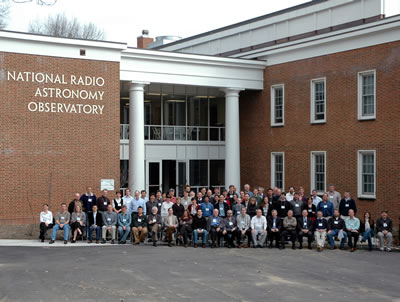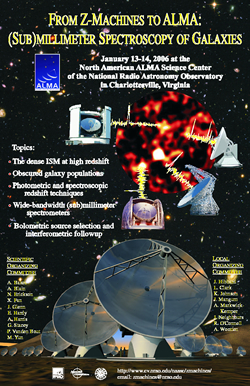Abstract Detail
13 January, 2006 - 4:25 PM Zpectrometer: An Ultra-wideband Spectrometer for the Green Bank TelescopeA. I. Harris(1), A. J. Baker(2,1), P. R. Jewell(2), and K. P. Rauch(1), S. G. Zonak(1), K. O'Neil(2), A. L. Shelton(2), R. D. Norrod(2), J. Ray(2), G. Watts(2) [(1) University of Maryland (2) National Radio Astronomy Observatory] We discuss astronomical and technical aspects of the
Zpectrometer, an ultra-wideband radio spectrometer now under
construction for the 100 meter diameter Green Bank
Telescope. The Zpectrometer covers the entire Ka-band (26
to 40 GHz) with a set of analog lag cross-correlation
spectrometers in a multi-channel correlation radiometer
architecture. The instrument is optimized for observations
of low to moderately excited carbon monoxide molecules in
the lowest energy rotational transitions. With a 14 GHz
bandwidth at a center frequency of 33 GHz the Zpectrometer
has an unprecedented 42 percent fractional bandwidth,
corresponding to redshifts of 1.88 < z < 3.43 in the
carbon monoxide J=1-0 transition and 4.76 < z < 7.87
in the J=2-1 line. Probing cool as well as warm molecular
material at redshifts near z = 2.5 is essential for
constraining the physical conditions in young galaxies in
the era when most of the stars in the Universe formed and
galaxies assembled. The Zpectrometer's bandwidth, coupled
with the Green Bank Telescope's sensitive receiver and
enormous area, makes the Zpectrometer ideal for blind line
searches in targets at positions identified at
submillimeter, infrared, and other wavelengths. Its
spectral resolution of approximately 150 km/s is sufficient
for velocity-resolved spectroscopy to find dynamical masses
and test for interactions in the target galaxies.
| |






